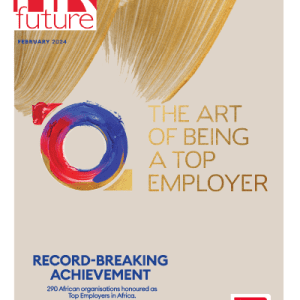Performance reviews – it’s all about having quality conversations.
As your business evolves from start-up to scale-up or grows from a small business into a medium-sized employer, it will inevitably become necessary to formalise your HR processes. From recruitment and onboarding to employment equity and training, there is certainly a lot to think about. One vital function you should not overlook is performance reviews.
Performance reviews used to be a source of angst for employees, especially when associated with salary increases, performance bonuses, or negative feedback. But more progressive companies today see them as an opportunity to help people grow in the business. They offer a platform for employees to seek support, resolve issues, and set realistic goals. This helps employees flourish and improves collaboration across the organisation.
A performance review is a meeting between an employee and manager to discuss the employee’s performance. Businesses usually have performance meetings every quarter or once a year. Managers and employees provide feedback, set targets for improvement, and negotiate pay increases. Regular reviews help you keep team members motivated and work with them to improve their performance over time.
Both the employee and the company will get more from the performance review when it is treated as an important and valuable part of the employee experience rather than a box-ticking exercise. It is also important to note that performance reviews should not preclude high-quality, constructive and regular feedback throughout the year.
In a busy organisation, performance reviews are invaluable because they ensure managers and team leaders regularly sit down with team members to discuss their performance and opportunities available to develop their careers or improve their skills. Without regular performance evaluations, you may not notice that an employee is battling with a facet of the job, or fail to recognise excellent performance.
A structured, yet flexible approach, to working with colleagues to recognise and improve performance has become even more important in a world of remote work. Formal performance reviews and regular informal performance discussions help employees to know that they’re on track, in the absence of regular face-to-face meetings.
Performance review methods
Reviews will vary according to company culture, industry and each employee’s role in the business. For example, someone working in retail might be evaluated on how they interact with customers. A B2B salesperson might be assessed on their sales figures. Many of the metrics are evolving as more people work remotely – there is a shift towards key performance indicators (KPIs) that are outcome-focused.
Companies will also use a combination of different tools and methodologies to measure performance.
Performance management modules in HR systems can be invaluable in helping you track objectives and key results, provide 360-degree feedback, and give feedback to your employees. HR systems can help make performance management more transparent and objective, too.
Employee evaluation form
An employee evaluation form is a document that HR sends to the employee before their performance review. The employee then answers specific questions about their performance and sends the form to their line manager. During the review meeting, the form serves as a guide when discussing the employee’s progress.
Meetings and catch-ups
For a less formal approach, you might choose to have more casual meetings every few months to discuss progress or issues. This is common in smaller companies where team members work closely together, but larger companies can also benefit from constant and open performance discussions.
Rating scales
With rating scales, employees and managers work through a predefined list of activities and rank the employee’s performance against each metric. This is common in larger companies that want data on general performance across the business.
Ranking against objectives
Objective-based reviews involve setting targets at the beginning of each year or quarter, and then deciding if the employee has achieved these goals during the review meeting. This method can be used in almost any organisation.
360-degree feedback
When a business seeks 360-degree feedback on an employee, they get comments from the manager, colleagues, and customers to get a bigger picture of performance.
Tips for getting more from performance reviews include
- Offer highly specific feedback on performance and include the business impact.
- Use clear examples when discussing overperformance or underperformance.
- Document and discuss employee performance throughout the year so the performance review does not contain any surprises.
- Review performance using clear KPIs. Try to make them as objectively measurable as possible.
- Remember to relook KPIs for employees who are mostly working remotely—for instance, focus on outputs and adjust KPIs if their role has changed.
- Be generous with praise and recognition.
- Once team members are clear regarding their role, and have the necessary tools, trust your team to get on with it.
- At all costs, avoid micro-managing unless you are dealing with a serious underperformer.
- Team performance should be as closely tracked as individual performance.
- Colleagues should feel safe to share feedback with their managers and leaders. A performance review shouldn’t be a top-down discussion.
To manage performance in a remote and hybrid working world, the golden ingredient is to enable continuous feedback discussions to be generated and acted upon.
Marvin Opperman, People Director, Sage Africa & Middle East.















